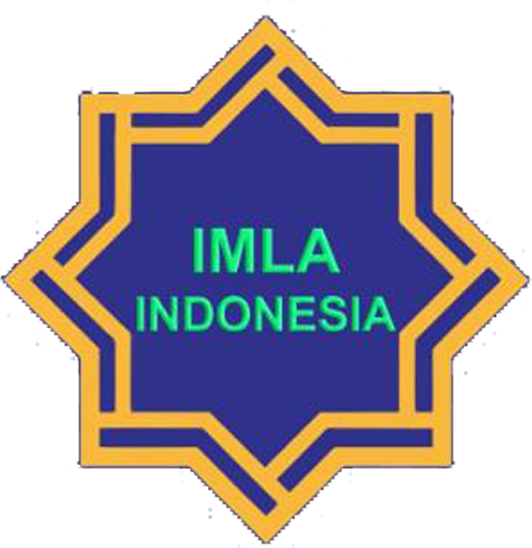Developing the Digital and Non-Digital (Arabic - Indonesian) Bilingual Dictionary to Improve the Vocabulary Proficiency of Islamic Elementary School Students/ تطوير المعجم ثنائي اللغة (عربية – إندونيسية) الرقمي وغير الرقمي لتلاميذ المدرسة الابتدائية
Abstract
يهدف هذا البحث إلى انتاج المعجم ثنائي اللغة الرقمي وغير الرقمي لتلاميذ المدرسة الابتدائية ومعرفة مدى صلاحيته ومدى فعاليته في تعليم اللغة العربية. و المفردات مصحوبة بالأمثلة في الجملة البسيطة والصورة الجذابة. المنهج المستخدم في هذا البحث هو منهج البحث والتطوير عند بورغ وغال. وطريقة جمع البيانات هي طريقة الملاحظة والمقابلة والاستبانة وورقة التحقيق والاختبارين أي الاختبار القبلي والاختبار البعدي. ونتيجة هذا البحث هي (1) قد تم تطوير المعجم ثنائي اللغة (عربية – إندونيسية) الرقمي وغير الرقمي لتلاميذ المدرسة الابتدائية، (2) اعتمادا على النتيجة المحصولة من خبير المواد وخبير الوسائل التعليمية واستبانة استجابة الدارسين، هذا المعجم ذو صلاحية جيدة جدا، (3) بناء على نتيجة التجربة الميدانية التي تمت تنفيذها بالاختبار القبلي والاختبار البعدي من قبل التلاميذ، فقررت أن هذا المعجم فعال جدا للاستخدام في تدريس اللغة العربية ويمكن ترقية نتيجة التلاميذ في تدريس اللغة العربية.
This study aims to produce a product in the form of an Arabic-Indonesian dictionary digital and non-digital to improve the vocabulary skills of students at Islamic elementary school and to know the level of validity and the level of effectiveness. Equipped with simple sentence examples and an attractive picture. The research model used is the Research and Development model based on model of Borg & Gall. Methods of data collection in the form of observation, interview, questionnaire, validation sheets, and two tests, namely pre-test and post-test. The result of this research is (1) a bilingual (Arabic-Indonesian) digital and non-digital dictionary has been developed for the students of Islamic elementary school, (2) depending of the result obtained from the material expert and media expert and the students’ response questionnaire, this dictionary is of very good validity, (3) based on the result of the field experiment that was carried out through the pre-test and post-test by students, it is considered that this dictionary is very effective for improving vocabulary efficiency and for increasing the value of student in the Arabic learning
Keywords
Full Text:
PDF (العربية)References
الخيرية، ليلة. 2018. تطوير المعجم المصور المساعد على كتاب اللغة العربية للصف السادس المدرسة الابتدائية مفتاح الهدى باندولان. البحث العلمي غير منشور. جامعة مولانا مالك إبراهيم مالانج. http://etheses.uin-malang.ac.id/12198/
الرحمن، توفيق. 2016. المعاجم العربية الإلكترونية واستخدامها في إندونيسيا. مجلة أبجدية
( (International journal of education
http://ejournal.uin-malang.ac.id/index.php/abjadia/article/view/3996
زركشي، أحمد هداية الله. 2015. واقع تعليم اللغة العربية في المعاهد والمدارس بإندونيسيا. الرياض: دار وجوه النشر والتوزيع.
طعيمة، رشدي أحمد. 1985. دليل عمل في إعداد المواد التعليمية لبرامج تعليم العربية. مكة المكرمة: جامعة أم القرى
مجيب، أحمد و بصري، أحمد. 2020. تطوير مادة تعليم المفردات لبرنامج "صباح اللغة" على أساس النظرية السلوكية لطلبة معهد الجامعة. Journal Tsaqofiya: jurnal Pendidikan Bahasa & Sastra Arab. Vol 2. No.1. https://doi.org/10.21154/tsaqofiya.v2i1.11
يعقوب، عامل. 1985.المعاجم اللغوية العربية. بيروت،لبنان: دار العلم للملايين.
Arikunto, Suharsimi. 2013. ProsedurPenelitian: SuatupendekatanPrkatik. Jakarta: RinekaCipta.
Asrori, Imam. 2014. Strategi Belajar Bahasa Arab: Teori dan Praktek, Malang: Misykat.
Borg, W. R. &Gall.M. D. (1983) Educational Research: An Introduction, Fifth Edition. New York: Logman
Fajriah, Zahratun. 2015. Kosakata Bahasa Arab (Mufradat) Melalui Penggunaan Media Kartu Kata Bergambar. Jurnal Pendidikan Usia Dini. Vol. 9 No.1.http://journal.unj.ac.id/unj/index.php/jpud/article/view/3496
Huda, Nurul &Ulfah, Nabilah. 2019. Pengembangan Kamus Arab-Indonesia Sebagai Penunjang Penggunaan Buku Ajar Madrasah Tsanawiyah Di Kelas VIII. Jurnal Alfazuna. Vol 3 No. 2. https://doi.org/10.15642/alfazuna.v3i2.533
Muthollib, Abdul. 2015. Lu’batul Qamus: Cara Unik Memperkaya Mufradat. Jurnal Arabia: Jurnal Pendidikan Bahasa Arab. Vol. 7 No.1. https://dx.doi.org/10.21043/arabia.v10i1.1377
Taufiqurrahman, H.R. 2008. Leksikologi Bahasa Arab. Malang: UIN Malang Press
Scholfield, P. 1982. Using the English Dictionary For Comprehension. TESOL Quartely. Vol. 16
Suhaimi. 2011. Mu’jam Arabi Dan Urgensinya Dalam Pembelajaran Bahasa Arab Di Perguruan Tinggi Agama Islam. Jurnal ilmiyah didaktita. https://www.neliti.com/publications/82872/mujam-arab%C4%AB-dan-urgensinya-dalam-pembelajaran-bahasa-arab-di-perguruan-tinggi-ag
DOI: http://dx.doi.org/10.17977/um056v4i2p182-202
Refbacks
- There are currently no refbacks.
Copyright (c) 2020 Makiatul Madaniah

This work is licensed under a Creative Commons Attribution-NonCommercial 4.0 International License.
AL-ARABI is indexed by:
Editorial Office:
Al-Arabi: Journal of Teaching Arabic as a Foreign Language
Arabic Department, Faculty of Letters, Universitas Negeri Malang (UM)
Jalan Semarang 5, Malang 65145, Indonesia.
Telephone: (0341) 551312 Ext. 239. Fax (0341) 567475.
E-mail: alarabi@um.ac.id

Al-Arabi: Journal of Teaching Arabic as a Foreign Language is licensed under a Creative Commons Attribution 4.0 International License.
Based on a work at http://journal2.um.ac.id/index.php/alarabi/










